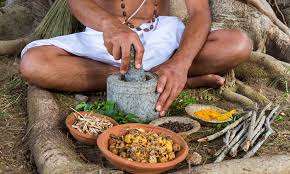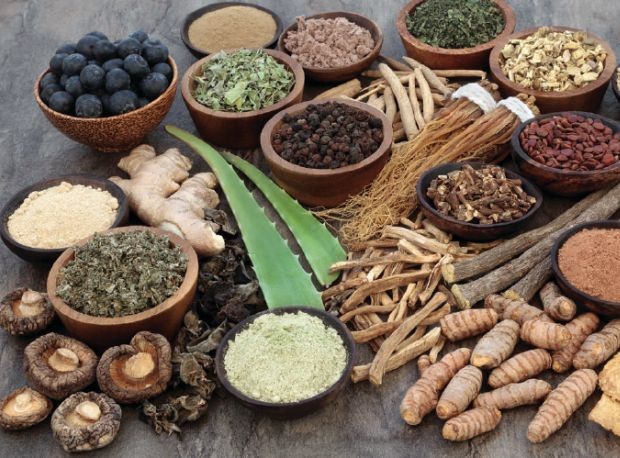Preserving Life or Poisoning Health? The Hidden Danger of Overprescribed Ayurvedic Medicines and Preservatives.
- Dr Rakesh VG
- Aug 1
- 3 min read
Updated: Aug 2
By Dr Rakesh Ayureshmi, Ayureshmi Ayurveda Wellness Centre, Kollam, Kerala, India

Is Your Daily Churna Slowly Killing Its Potency?
Imagine trusting a time-honored Ayurvedic remedy for your immunity, digestion, or skin issues — only to discover that the very medicine meant to preserve your health is laced with chemical preservatives compromising your well-being. What if the root problem isn’t Ayurveda itself, but how modern manufacturing is quietly eroding its soul?
As Ayurvedic practitioners and conscious consumers, it's time to confront an inconvenient truth: over-prescription, long shelf-life marketing, and chemical preservatives are silently transforming Ayurvedic medicine from amrit into potential visha (poison).
Why This Matters Now More Than Ever
Ayurveda, once handcrafted in harmony with seasons and the patient's prakriti, is increasingly caught in the industrial race for mass production and long shelf-life. The result? An alarming overuse of preservatives and standardization methods that compromise both the efficacy and ethics of our healing science. As chronic lifestyle diseases surge, patients are being prescribed formulations year-round — many loaded with synthetic stabilizers, sodium benzoate, parabens, or heavy-metal laced bhasmas in unregulated quantities.
This is not just a crisis of practice. It is a crisis of philosophy.
The Mass Manufacturing Myth in Ayurveda
Ayurveda was never meant to be mass-produced in bulk and stored for years. Classical references from Charaka Samhita (Sutra Sthana 1/122) emphasize yuktivyapasraya chikitsa — treatment must be timely, individually tailored, and context-aware. Instead, today’s formulations are:
Made in bulk batches for profitability, not patient-specific need.
Designed with 2- to 5-year shelf-lives, requiring chemical preservatives.
Dispensed without pause, even in non-indicated cases, leading to accumulation.
A 2021 review in the Journal of Ayurvedic and Herbal Medicine highlighted how excessive use of sodium benzoate and potassium sorbate in Ayurvedic syrups may alter liver enzyme profiles and impair gut flora when consumed continuously. Another international toxicology study published in Food and Chemical Toxicology (2020) noted that long-term exposure to methylparaben — found in some Ayurvedic creams and lepas — may trigger estrogenic activity and DNA damage.
Preservatives: A Necessary Evil or Unnecessary Habit?
Preservatives are intended to prevent microbial growth. But the over-dependence on them in Ayurvedic formulations indicates poor batch planning, inadequate hygiene, and commercial scale greed, not necessity.
In classical Ayurveda, preservation was achieved through:
Honey (Madhu), Ghee, or Taila as natural carriers with microbial resistance.
Fermentation in Asavas and Arishtas using sugar and herbs – self-preserving when prepared authentically.
Solar drying and air-tight storage in earthen or copper vessels.
Yet, modern manufacturers rarely follow these traditional techniques. Why? Because it's costlier, time-consuming, and less “scalable.” But what is scalable is iatrogenic toxicity, chronic inflammation, and loss of herbal vitality.
Short-Batch, Preservative-Free: The Way Ayurveda Was Meant to Be
The solution lies not in abandoning Ayurveda, but in reviving its original principles.
Short-Batch Preparation:
Medicines should be crafted seasonally and in quantities no larger than a practitioner can dispense within 2–3 months. This retains prabhava (special potency) and ensures alignment with doshic seasons (ritucharya).
In-Clinic Formulation:
Just as a chef prepares food fresh for each guest, the Vaidya should ideally supervise or prepare medicine batches suited for the vikruti (imbalance) of that moment. This is especially important for Rasayana, vajikarana, and immune-enhancing tonics.
Education and Regulation:
Doctors and pharmacists must be trained to recognize preservative-free alternatives, and patients should be made aware of the risks of indiscriminate consumption.
"Yuktam Yuktya Samyuktam Hitam Chapi Yathaavidhi"
— Charaka Samhita
(Only medicine prepared with proper knowledge, timing, and proportion becomes beneficial)
A Living Tradition, Not a Lifeless Product
We must remember: Ayurveda is a jeeva shastra — the science of life, vitality, and subtle energy. If its medicines are manufactured like machine parts and preserved like pickles, we sever its living essence. Healing then becomes mechanical, not sacred.
This is not just a technical issue. It is a spiritual, ethical, and public health issue.
Let’s return to:
Apothecary-style dispensaries in wellness centres.
Customized scripts over prescription pads.
Handmade churnas and kalpas, not factory-sealed bottles.
For the present need
Change the manufacturing methods to preserve the potency for sake of patients and Ayurveda.
Because Ayurveda does not treat diseases. It restores the rhythm between individual and nature. That rhythm cannot be preserved in a chemical vial.
Conclusion: Reclaiming the Soul of Ayurveda
It is time we stop glorifying factory-sealed “Ayurvedic” medicines and begin glorifying freshly prepared, dosha-tailored, preservative-free medicine made with devotion and wisdom.
Patients deserve vitality, not just symptom suppression.
Vaidyas deserve autonomy, not dependency on pre-packed pills.
Ayurveda deserves its soul back.
Let us return to the roots — with wisdom, not nostalgia.
“Ayurveda was never meant to be a factory product. Let’s bring back freshly made, preservative-free formulations that heal — not harm. Are you ready to reclaim real healing?”




Comments